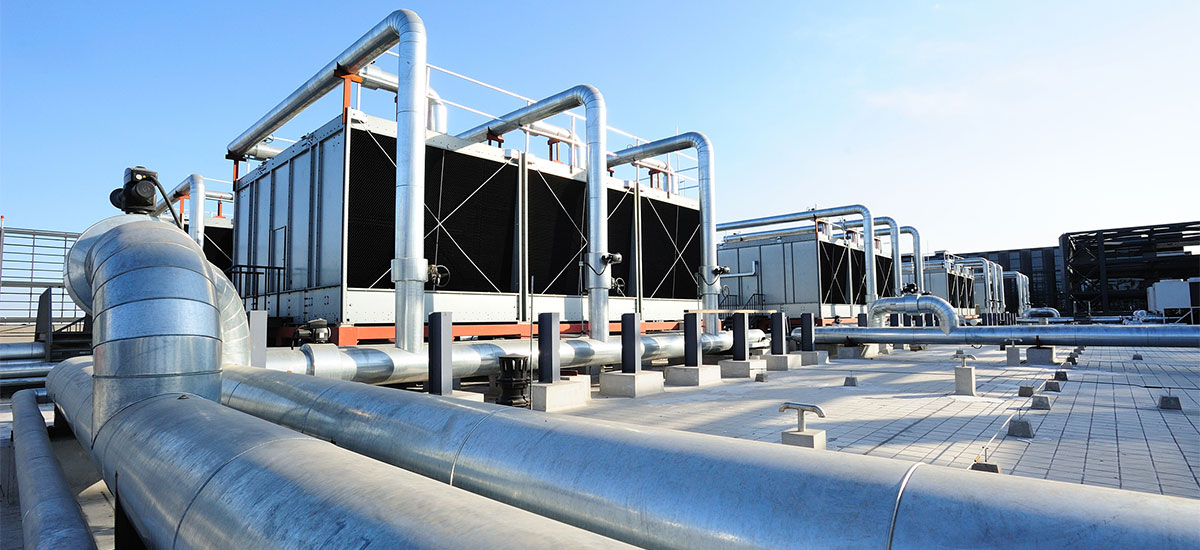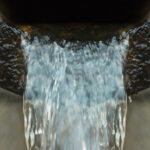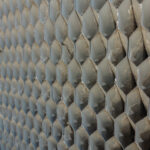
Utilizing Cooling Tower Blowdown Properly
Cooling towers concentrate water by evaporation and therefore concentrate dissolved solids in the water. They also act as air scrubbers; collecting dirt, debris and microbiological material that gets sucked into the tower. This material circulates throughout the water circuit and concentrates along with the dissolved solids as the water evaporates. As the concentration increases, the dissolved solids (mineral salts) reach the saturation point and precipitate to form a gritty sludge that accumulates and deposits on condenser tubes, heat exchanger surfaces and can harden into scale.
Blowdown is a fundamental method used to control total dissolved solids in cooling towers by removing a portion of the recirculated water to keep impurities at acceptable levels. Over-reliance on blowdown to control cooling tower total dissolved solids (TDS) levels results in excessive makeup water consumption and can promote corrosive water conditions. Too little blowdown can lead to scale formation and other problems.
Proper cooling tower treatment begins with reviewing the makeup water and operating parameters of the system to find the ideal chemical treatment program to control scaling, deposition, fouling and corrosion. Once the chemical program is designed, blowdown is employed to maintain the proper water balance and chemistry balance in the cooling tower.
How blowdown is controlled
Conductivity is an easily measured parameter that is proportional to TDS. In order to control TDS, conductivity controllers are used to monitor and adjust conductivity levels in the cooling tower. The set points on the conductivity controller will activate a blowdown valve that will regulate the amount of blowdown. Properly employed conductivity control, based on your equipment, water temperature, and chemistry, will minimize water consumption and optimize scale and corrosion control.
Overuse of blowdown
Blowdown is used to help avoid the over cycling of dissolved solids that would lead to deposition in your cooling system. If you find yourself over utilizing blowdown in a worst-case scenario, your makeup water conductivity will be very close to your cooling tower water as you dump large amounts of water to the drain.
More realistically though, your water treatment chemical program is designed to function within a certain control range of conductivity to allow you to cycle up, or concentrate, the tower water. This control range will provide an upper and lower limit for conductivity.
As you operate below the designed lower conductivity control range, the potential for scaling will certainly decrease, but the potential exists for:
- Wasted Water – Too much blowdown forces the tower makeup water valve to open and add water to maintain the sump level. This unnecessary use of water is caused by high blowdown
- Increased Sewage Costs – All that wasted water increases hydraulic loading and sewage costs due to the increased water volume to the sewer
- Wasted Chemicals – All the chemistry fed to help prevent deposition is unnecessarily bled out of the system with the blowdown
- Potential for Increased Corrosion – Lower conductivity without the proper chemical treatment will accelerate corrosion.
All of these reduce efficiency and increase operational costs.
Underuse of blowdown
Trying too hard to conserve water beyond the boundaries of your chemical treatment program will present its own set of problems:
- Increased Potential for Scaling and Deposition – All the chemistry fed to help prevent deposition is overwhelmed and can’t maintain the solubility limits and the water becomes over saturated. Scaling of tower fill and condenser will increase energy costs. Fouled blowdown lines from scale and debris can exacerbate the situation.
- Potential for Increased Corrosion – The higher conductivity will drive up the corrosion potential and exceed the limits that can be controlled with the existing chemical treatment program.
- Increased Potential for Microbiological Growth – The high cycles and retention time means that biological activity can increase and put a greater demand on the biocides to control the bio-growth.
Again, all of these reduce efficiency and increase energy and operational costs.
An efficient and effective water treatment program balances the right use of treatment chemicals and incorporates the prudent use of blowdown to maintain your system’s water quality for optimal results. QualiChem designs cooling tower water treatment chemical programs that eliminate excessive blowdown while solving scale, corrosion, and microbiological issues.
Contact us to learn how we can blend the proper chemistry for your cooling system operation.



